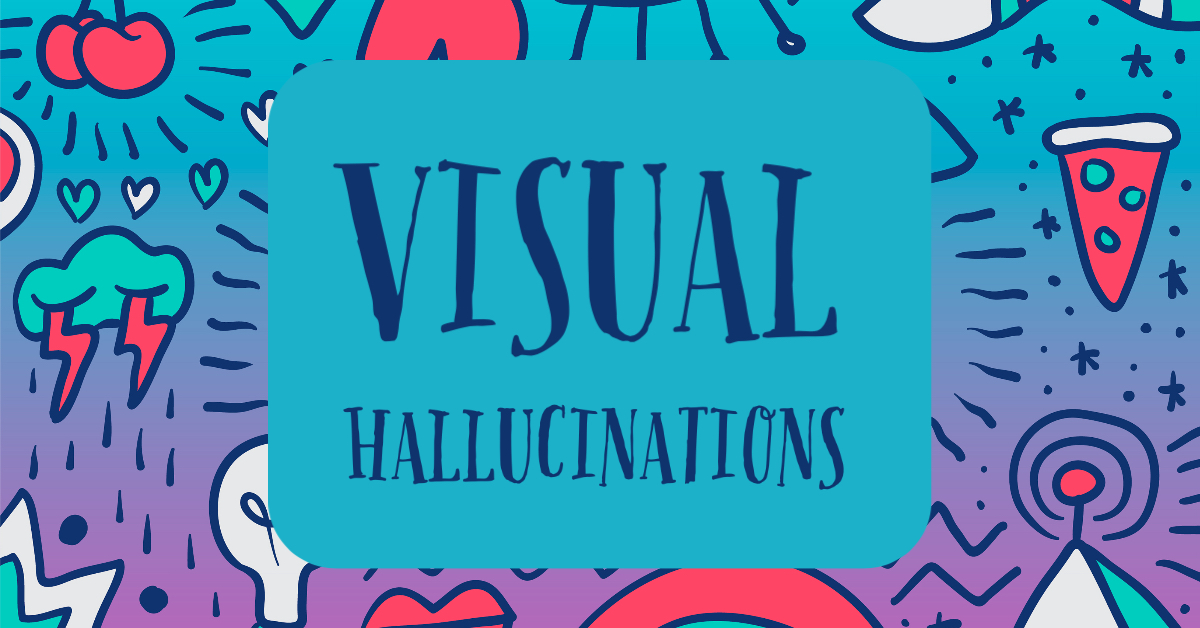Charles Bonnet Syndrome is a condition where people with sight loss experience visual hallucinations (seeing things that are not there). In this article, we attempt to answer some questions about this condition.
What sort of Hallucinations do people with sight loss get?
- People may see patterns, colours, shapes (simple hallucinations) or distorted faces, objects, animals, landscapes, people in period costume (complex hallucinations).
- Hallucinations are often vivid and can be seen in greater detail than the person can see in real life.
- The hallucinations may be frightening or benign.
- The hallucinations are always visual, they don’t involve taste, touch, smell or hearing things.
- People are usually aware that what they are seeing is not real or learn to recognise them as not real, they do not develop delusions.
- Charles Bonnet syndrome isn’t a mental illness
Who gets Charles Bonnet Syndrome?
- Usually occurs in people with more than 60% sight loss.
- Can occur at any age
- According to the Macular Society up to half of people with Macular Degeneration experience visual hallucinations (Macular Society, n.d.).
What causes Charles Bonnet Syndrome?
- Normally when the eyes are open the brain is constantly receiving visual signals.
- Different parts of the brain are responsible for seeing different types of things, such as colour, faces etc.
- When a person experiences sight loss, these signals are lost or disrupted.
- The brain cells responsible for vision suddenly don’t have enough to do, so start firing spontaneously.
- People will experience hallucinations depending on what these areas are responsible for seeing.
- The brain gradually gets used to this reduced visual stimulus, so the hallucinations gradually reduce overtime.
- However, another deterioration vision may cause the Hallucinations to return
- Infection such as urine or chest infections may also cause the Hallucinations to return.
How do you diagnose Charles Bonnet Syndrome?
- There is no one test to diagnose Charles Bonnet Syndrome
- A diagnosis is made by talking to the patient and ruling out other medical conditions that could be causing Visual Hallucinations
- “If a person has vision loss and they’re experiencing simple or complex hallucinations and don’t have signs of dementia or mental illness, they probably have Charles Bonnet syndrome”. (NHS, 2018)
How do you treat Charles Bonnet Syndrome?
- There is currently no cure for Charles Bonnet Syndrome
- Gaining reassurance that the Hallucinations are caused by sight loss and not a mental illness can help people cope better.
- Talking about CBS with family/friends, GP or Ophthalmologists can help.
- CBS isn’t a mental illness but professionals working in mental health have experience in helping people cope with hallucinations.
- Esme’s Umbrella recommends the following self-help techniques (Potts, n.d.)
- if sitting, try standing up and walking round the room. If standing, try sitting.
- Walk into another room or another part of the room.
- Turn your head slowly to one side and then the other. Dip your head to each shoulder in turn.
- Stare straight at the hallucination.
- Change whatever it is you are doing at that moment – turn off/turn on the television/radio/music.
- Other strategies target the brain regions involved in hallucinations. These include:
- Changing light level in the room. It might be the dim light that is causing the hallucinations. If so, turn on a brighter light – or vice versa.
- Blink your eyes once or twice.
- A specific eye-movement exercise. When the hallucination starts, look from left to right about once every second for 15 seconds without moving your head. If the hallucination continues, have a rest for a few seconds and then repeat the eye movements. You may need four or five repeats of the eye movements to have an effect but there is no point in continuing beyond this if there is no benefit.
- Shine a torch upwards in front of the eyes – NOT INTO THE EYES – and the light stimulates the cone cells, so the brain switches off the hallucination.
- Some medications used to treat Epilepsy, Dementia and Parkinson’s Disease have been effective for some people, but these may also come with serious side effects.
Further Reading
- Macular Society, n.d. Visual Hallucinations. [Online] Available at: https://www.macularsociety.org/visual-hallucinations [Accessed 12 August 2020].
- NHS, 2018. Charles Bonnet syndrome. [Online] Available at: https://www.nhs.uk/conditions/charles-bonnet-syndrome/ [Accessed 12 August 2020].
- Potts, J., n.d. Coping strategies for Charles Bonnet Syndrome. [Online] Available at: https://www.charlesbonnetsyndrome.uk/living-with-cbs/ [Accessed 12 August 2020].
- RNIB, 2017. Understanding Charles Bonnet syndrome. [Online] Available at: https://www.rnib.org.uk/eye-health/eye-conditions/charles-bonnet-syndrome-cbs [Accessed 12 August 2020].

